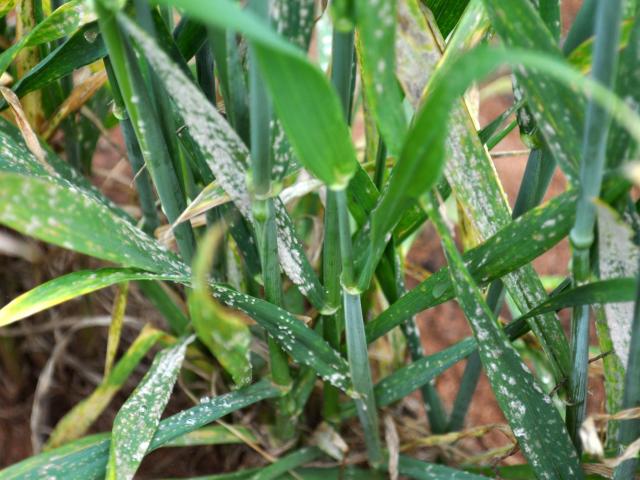Get the jump on cereal crop diseases
After 2015 there is likely to be disease inoculum around that could pose a threat to this season’s crops.
2015 was a big year for many crop pathogens due to the presence of autumn green bridge in several areas and the moist, humid winter.
In wheat; powdery mildew, wheat streak mosaic virus and all three rusts (leaf, stripe and stem) were found in crops, particularly in the northern region.
As always yellow spot and septoria nodorum blotch were present and will be hosted on infested stubble.
In barley it was net blotches, leaf rust, powdery mildew and scald.
Despite the hot dry spring and relatively dry summer in many areas, there is potential for rust and mildew diseases to carry over and build-up into this season on green bridge on the south coast.
There is also potential for diseases in all areas on infected stubble.
Key tips
Monitor volunteer cereals and weeds
- Destroy any volunteer cereal plants and weeds at least 4-6 weeks before sowing.
- Report any disease finds on volunteer cereals to Pestfax.
- Green bridge cereals and weeds can be tested for presence of viruses by contacting DAFWA Virologist Brenda Coutts.
Obtain new seed
- If you had wheat streak mosaic virus last season, obtain new seed for this year as it can be seed borne.
- Seed testing can be done through Agwest Plant Laboratories.
Disease outlook
- Keep up to date with disease outlooks that will be provided through DAFWA website and the Pestfax e-newsletter.
Soil test
- Soil test for root diseases and nematodes if you observed any uneven growth or bare patches in your crops last year.
Choose disease resistant varieties
- Where possible sow varieties with some resistance to the diseases your crop is at risk of.
- Refer to the 2016 Wheat Variety Sowing Guide for the new wheat variety disease ratings.
- Know the resistance ranking of your variety and plan accordingly.
- Be aware that some variety ratings to wheat leaf rust have changed after identification of a new wheat leaf rust pathogen in 2015.
Consider fungicides
- Consider applying in-furrow or seed dressing fungicides to reduce your risk of early infection of rusts and powdery mildew.
- Refer to Seed dressing and in-furrow fungicides for cereals in Western Australia.
Budget for early disease outbreak
- In case of early disease outbreak, budget for early foliar fungicide sprays where upfront fungicides are not used.
- Refer to Registered foliar fungicides for cereals in Western Australia.
Protect your crop health
- Healthy crops are better able to withstand disease attack so plan to apply adequate nutrition, particularly potassium.
- Be careful to avoid excessive nitrogen though as this can cause dense canopies that favour powdery mildew build up.
Minimise stubble-borne disease
- Rotate crops to avoid stubble borne diseases.
Consider late sowing
- Earlier sown crops may be more at risk of some diseases such as powdery mildew so consider later sowing of susceptible varieties/at risk paddocks or at least plan to monitor them closely for disease.
For more information on managing specific diseases refer to the DAFWA website, particlulary the Crop diseases webpage.
For further reading, see the GRDC 2016 Research Updates papers presented by the DAFWA plant pathology team:
- Less yellow spot in wheat: progress towards a decision support tool that will predict when yellow spot spores are released from the previous season stubble
- Yield response to fungicide control of barley spot type net blotch in Western Australia
- Foliar fungicide strategies for managing wheat powdery mildew
For more information contact Plant Pathologists Ciara Beard, Geraldton on +61 (0) 8 9956 8504, Geoff Thomas, South Perth on +61 (0) 8 9368 3262, Brenda Coutts, South Perth on +61 (0) 8 9368 3266.

